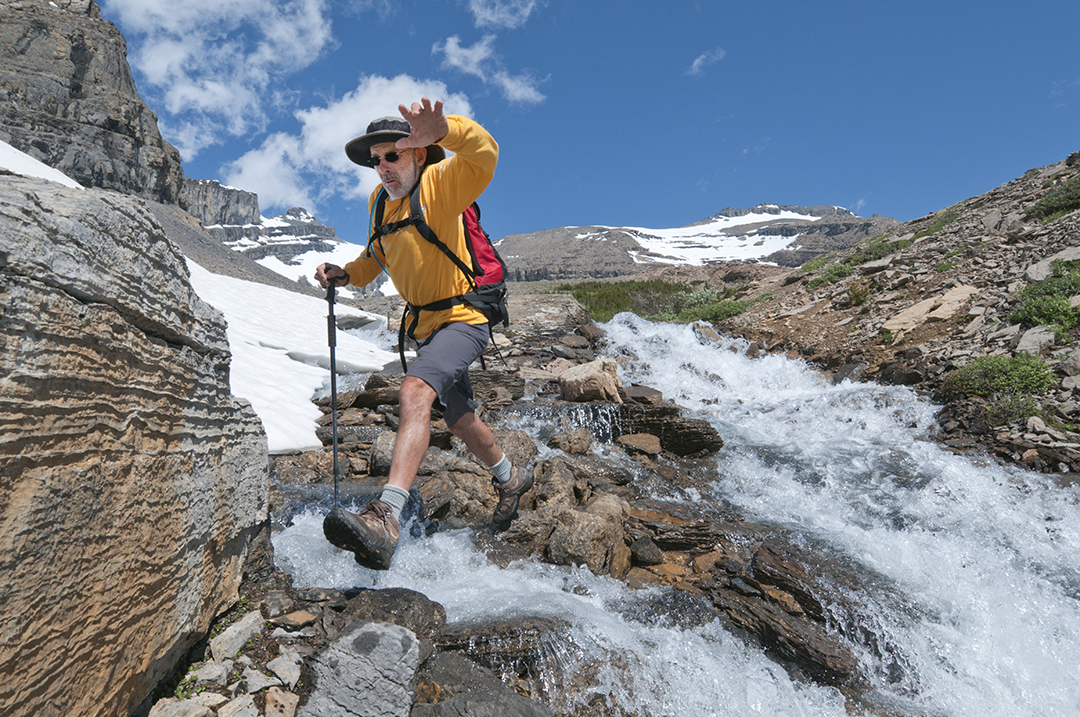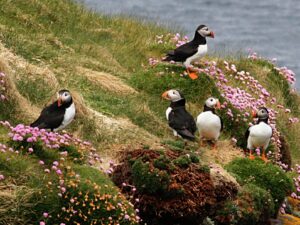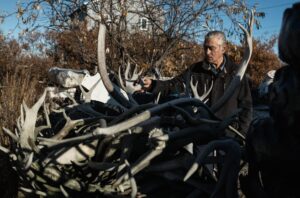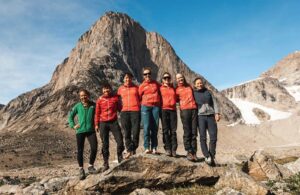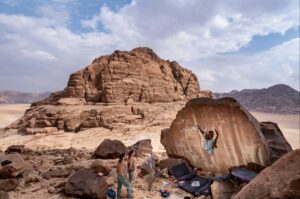The second-largest country in the world, Canada has two million lakes, 8,500 rivers, and three gigantic coastlines. Most of the 40 million Canadians live within 150km of the U.S. border. Almost everything above that is wilderness.
Some of the 20 highlights below are classics, some are hidden gems, but all are guaranteed to deliver.
Eastern Seaboard
Day Trips
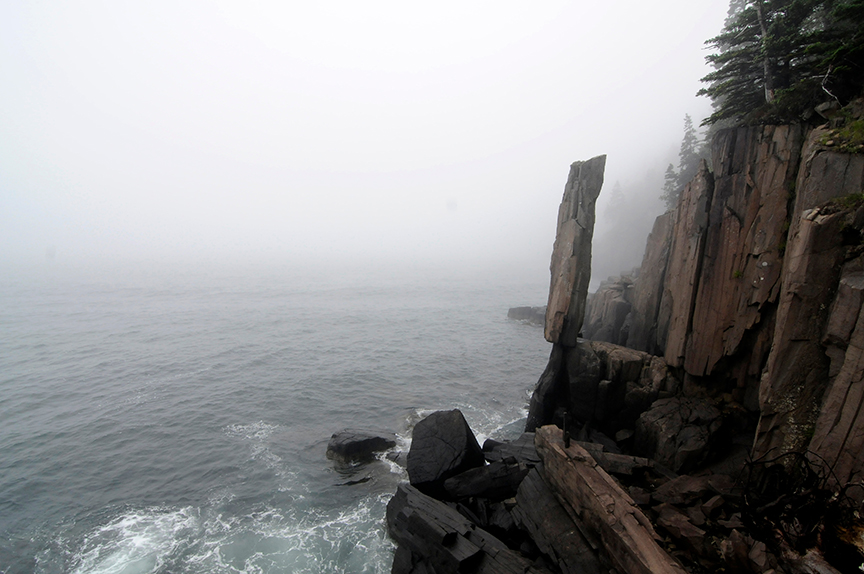
Balancing Rock, Digby, Nova Scotia. Photo: Shutterstock
Balancing Rock
A local favorite worthy of national attention, Balancing Rock is a nine-meter-high basalt column poised above St. Mary’s Bay, Nova Scotia. Although the delicately perched rock looks as if a stiff wind would blow it over, it is not as precarious as it seems: Years ago, someone hooked a line over it and tried to topple it with a fishing boat, but thankfully failed.
Balancing Rock is located on Long Island, just a short ferry ride from Digby Neck. A 2.4km trail leads down to the photogenic pillar.
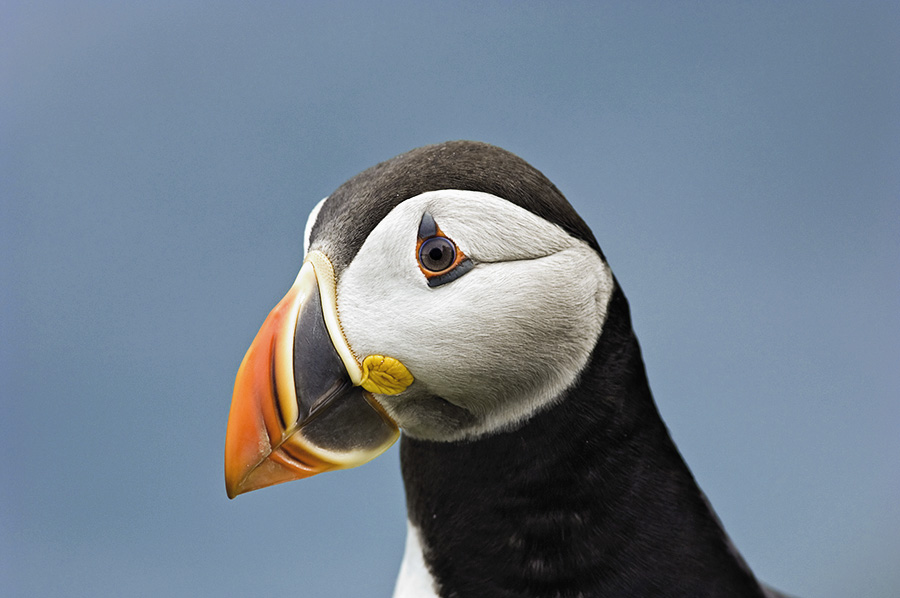
Atlantic puffin, Newfoundland. Photo: Thomas Kitchin and Victoria Hurst
St. John’s puffins
A mere half hour south of Newfoundland’s capital, the Witless Bay Ecological Reserve holds North America’s largest colony of Atlantic puffins. A tour boat brings visitors close to the grassy island on which more than 260,000 pairs of the clown-faced birds breed. On the way to Witless Bay, don’t miss Cape Spear, the easternmost point in North America. Humpbacks and other whales often breach off the rocky point.
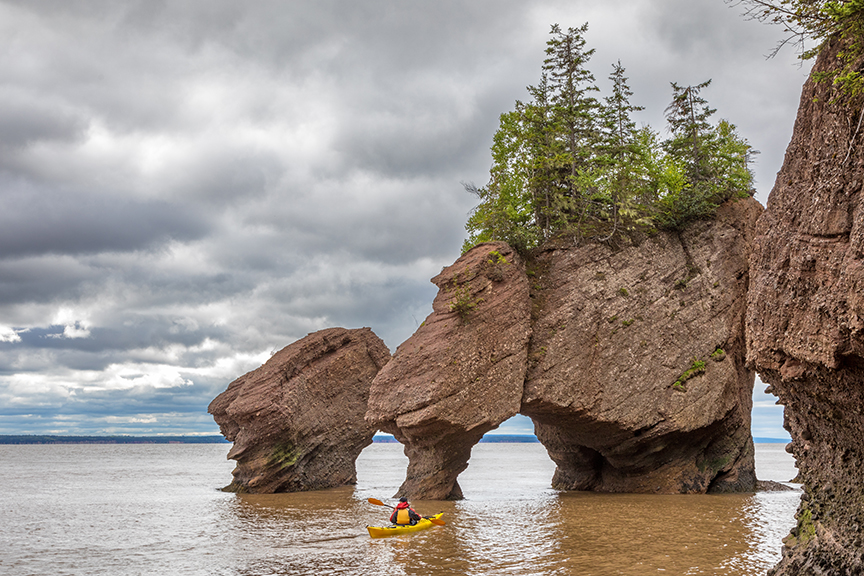
Hopewell Rocks, Bay of Fundy, New Brunswick. Photo: Shutterstock
Fundy, New Brunswick tides
The world’s largest tides, as high as a four-storey building, flood the Bay of Fundy twice every day, submerging sea stacks, reversing waterfalls and seeming to cause rivers to flow upstream. Two lucky accidents make Fundy unique: As the bay constricts, it loses depth, so the tidal onrush pillows up. And the precise length of the bay, 290km, amplifies the waves even higher. It’s a trick of fluid mechanics called the Seiche effect, but it’s simpler to think of Fundy as a tuning fork pitched perfectly for high tides.
Adventure
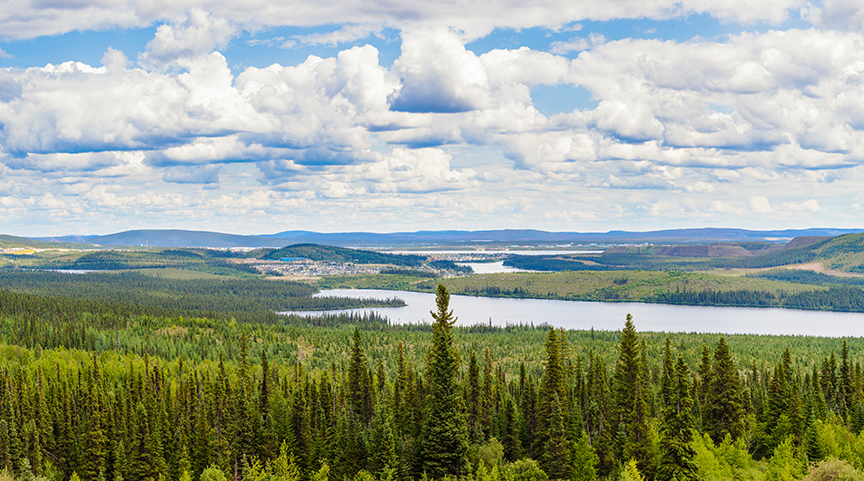
The boreal forest from the Trans Labrador Highway near Wabush. Photo: Shutterstock
Trans Labrador Highway
Adventurous motorists can now drive 1,200km through the wildest corner of eastern Canada, past ink-black lakes, lobsticks of black spruce and little else for hundreds of kilometers at a stretch.
The road begins in Wabush-Labrador City and deadends around Blanc Sablon, Quebec. From there, you must either retrace your way or take a ferry to Newfoundland.
The road is now fully paved, but so isolated that free satellite phones are available to borrow in case of breakdowns. (No cell coverage, except in some towns.) Sightings of black bears and wolves are common. One of Canada’s great wilderness roads. Note that Labrador accommodations tend to be basic motel/B&B.
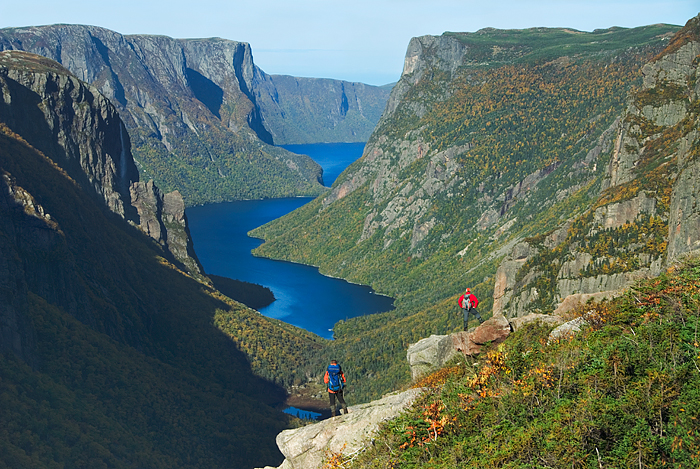
Western Brook Pond from the Long Range Traverse. Photo: Jerry Kobalenko
Gros Morne National Park
As a drive, a day hike, or even a serious multi-day backpack, Gros Morne on the island of Newfoundland symbolizes eastern adventure at its best. The tangerine-colored tablelands are one of the only places to see the Earth’s mantle (usually 30km or more underground). The granite sugarloaf of Gros Morne Mountain makes a great all-day outing for strong hikers, while the Long Range Traverse is the Maritimes’ premier backpacking trip. The three- to four-day trek begins with a boat ride to the end of Western Brook Pond, then a steep climb to one of the most iconic views in the country. And that’s just the beginning.
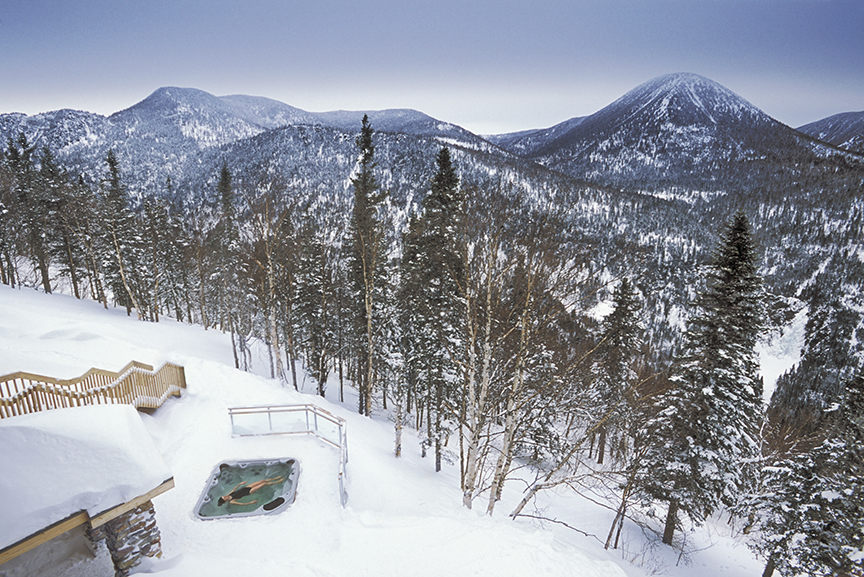
ChicChocs Mountain Lodge, Gaspé, Quebec. Photo: Jerry Kobalenko
Gaspé
The Gaspé peninsula’s Route 132 follows the widening St. Lawrence River as far as famous Percé Rock. This arched monolith marks the final exclamation point of the ancient Appalachian Mountains, but it doesn’t signal the end of a Gaspé experience. You can head into the mountains themselves for an exquisite study in contrast — great hiking during the day, luxury digs at night. ChicChocs Mountain Lodge lies in the heart of a nature reserve, at the end of a private road. Think fine dining, an outdoor hot tub, larch floors, custom birch furniture. Wall-to-wall windows look out onto two local giants, Mont Matawees and Mont Albert. Lucky hikers or skiers may glimpse Canada’s southernmost caribou near the open summits.
Culture

Lunenburg, Nova Scotia. Photo: Shutterstock
Lunenburg
Stroll past one of the Ferrari-red waterfront buildings or watch as a craftsman works on the latest incarnation of the famous Bluenose schooner, and you’ll understand why Lunenburg is one of only two urban UNESCO World Heritage Sites in Canada. (The other is Old Quebec.) Take in the Germanic architecture, or sample a more potent taste experience at a local distillery.
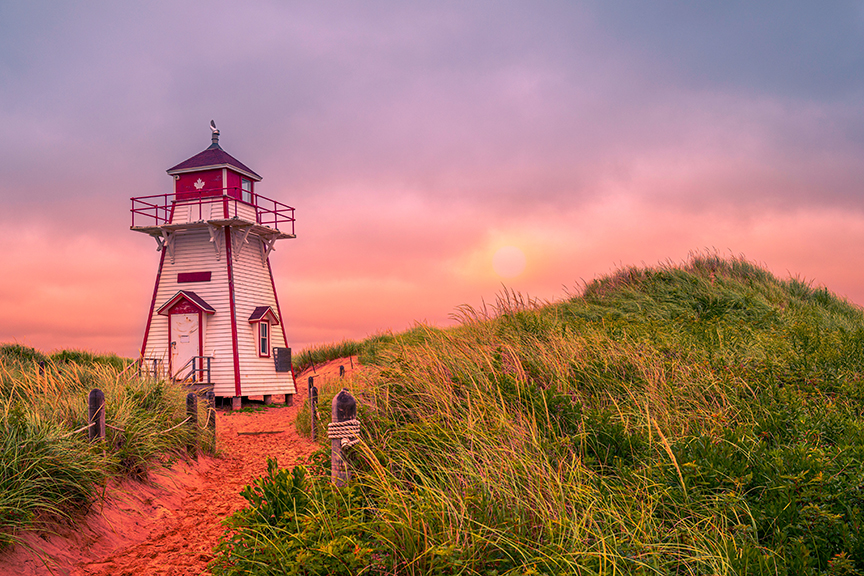
Covehead Harbour Lighthouse, Prince Edward Island National Park
Covehead Harbour Lighthouse
Prince Edward Island has 54 lighthouses, but one of the prettiest is at Covehead Bay in PEI National Park. The red-and-white structure sits by itself on a grassy bench overlooking a swimming beach, surrounded by flowers, sand dunes, and rippling grass. On a dark day, the scene captures the windswept raw spirit of the Maritimes; in sunshine, it’s a postcard.

Replica Viking longhouse, L’Anse aux Meadows, Newfoundland. Photo: Jerry Kobalenko
L’Anse aux Meadows
Driving distances in Newfoundland are farther than they appear, but if you have enough time on the island, don’t miss the World Heritage Site at L’Anse aux Meadows, at the tip of the Northern Peninsula, on the wind-lashed shores of the Atlantic Ocean. Here in 1960, researchers Helge and Anna Instad found the remains of the first (and still only) Norse village in North America.
Today, the original grassy mounds and depressions remain as subtle as most archaeological sites, but the exquisitely re-created longhouses, inhabited in summer by gregarious park employees chosen for their wild hair and dressed as Vikings, show how those explorers lived 1,000 years ago

The height of the maple leaf season, late September in Quebec’s Charlevoix region. Photo: Shutterstock
Quebec’s Flavor Road
The Charlevoix region east of Quebec City already has great hiking, biking, and whale-watching, but it’s also become a gastronomical destination. The Flavor Road, concentrated around Baie-Saint-Paul, features artisanal cheeses, chocolates, breads, fine meats, and microbreweries to help wash those dainties down. Check www.routedesaveurs.com for details.
Westward Ho
Day Trips
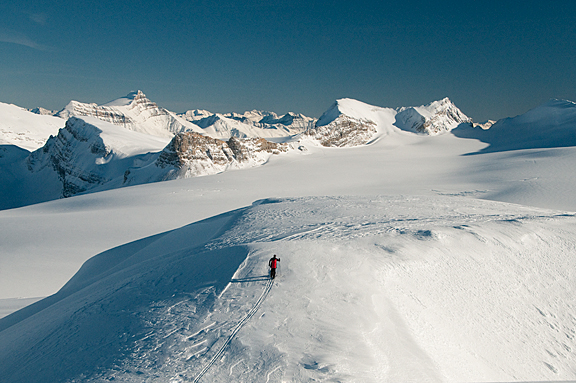
The Wapta Icefield, a polar experience just off the Parkway. Photo: Jerry Kobalenko
Icefields Parkway
One of the world’s most beautiful roads, Alberta’s Icefields Parkway covers 230 mountainous kilometers from Jasper to the Trans Canada Highway just west of Lake Louise. En route, it scales three major passes. You could spend an entire summer traveling the Icefields Parkway and getting out whenever you saw a promising hike or photograph.
The extraordinary width of this well-maintained road allows you to park just about anywhere. You can whiz along at 90kph or Sunday drive at 40kph, carefully scanning the ditches for grizzly bears on early June mornings when dandelions draw the bears out.
The road boasts too many classic stops to list, but the not-to-be-missed category includes iconic Peyto Lake and the Columbia Icefields; and two great day hikes, Parker Ridge and Cavell Meadows, during the wildflower peak in mid-July.
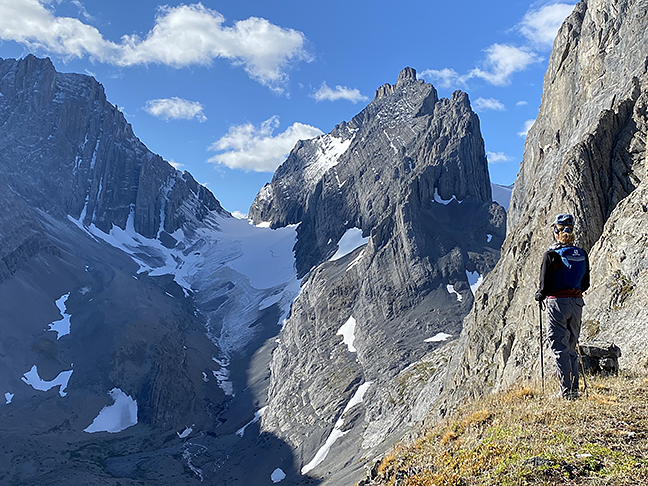
Piggy Plus Col, one of many great Kananaskis Country hikes. Photo: Jerry Kobalenko
Kananaskis Country
When locals in Calgary or Canmore want a day in the mountains, many head into Kananaskis Country. Its trails outshine many of those in the nearby national parks: they’re quieter, and since K-Country hikes start higher, they reach treeline sooner. More time in the alpine.
To get there, take Highway 20 south just east of where the Trans Canada Highway enters the Rockies, or opt for the rougher Smith-Dorien Highway up through the mountains behind Canmore. It eventually joins Highway 20, which soon climbs to 2,206m Highwood Pass –- the highest point in Canada along a paved highway. K-Country guidebooks list dozens of worthwhile hikes, but the drive to Highwood Pass itself is a gem.
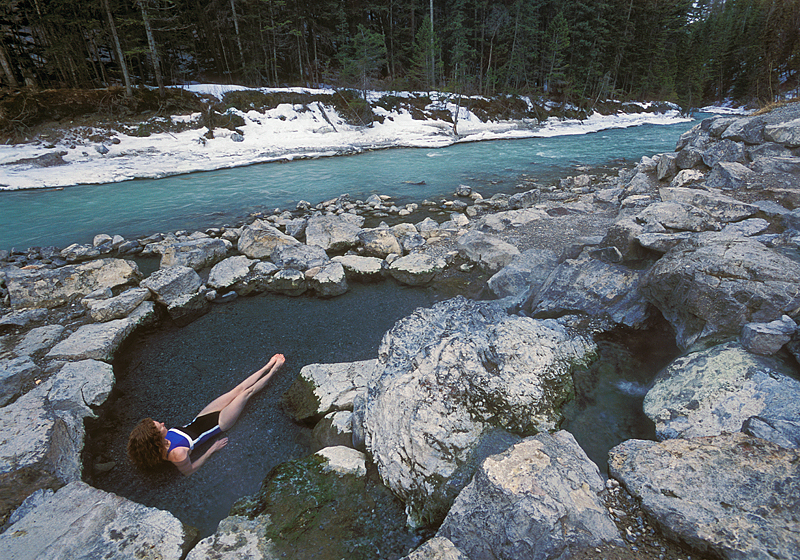
Lussier Hot Spring. Photo: Jerry Kobalenko
Lussier Hot Spring
Canada has about 110 hot springs, all of them in the west or northwest. Some are closed to the public, others are giant paved swimming pools with piped-in spring water. But many are just natural depressions in a wild setting, known more to locals than to tourists. Lussier Hot Spring, in Whiteswan Lake Provincial Park north of Cranbrook in southeastern B.C., has that primitive feel.
The temperature of the pools ranges in summer from 34°C to 43°C. Go early in the morning, especially on weekends, if you want the place to yourself: It may not be on the international radar, but it’s popular with local families.
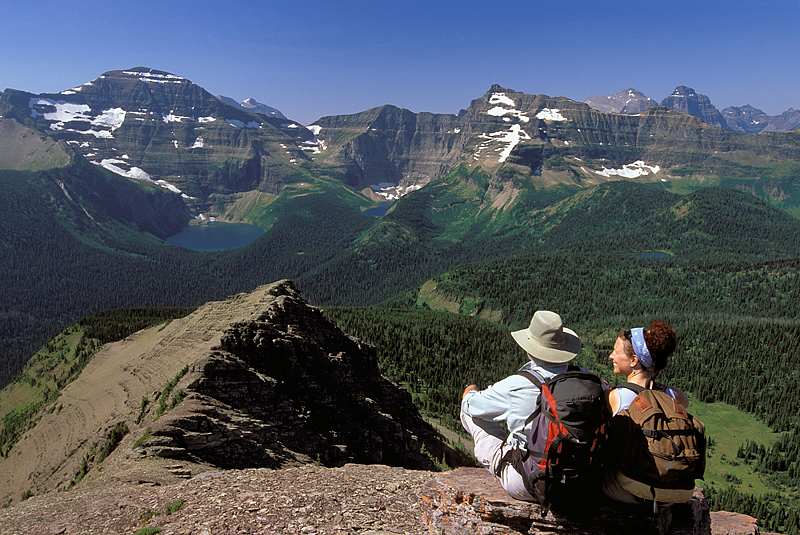
Carthew-Alderson Trail, Waterton Lakes National Park, Alberta. Photo: Jerry Kobalenko
Waterton Lakes National Park
Grand old hotels abound in the Rockies but few are more spectacularly placed than the regal Prince of Wales Hotel. The 100-year-old castle sits on a giant berm overlooking Upper Waterton Lake. Here, you can enjoy high tea while peering out of giant floor-to-ceiling windows
If tea and crumpets sound too sedentary, tackle instead one of Canada’s best day hikes, the 20km Carthew-Alderson Trail. The one-way route requires parking in Waterton Village and taking a morning shuttle to the trailhead at Cameron Lake. A steady climb leads to eagle views at Carthew Summit, with glimpses into mountainous Montana. Then it’s down, down, down, past a chain of terraced ponds. In the distance, past a notch in the mountains, the hazy prairies begin, without the usual foothills.
Adventure
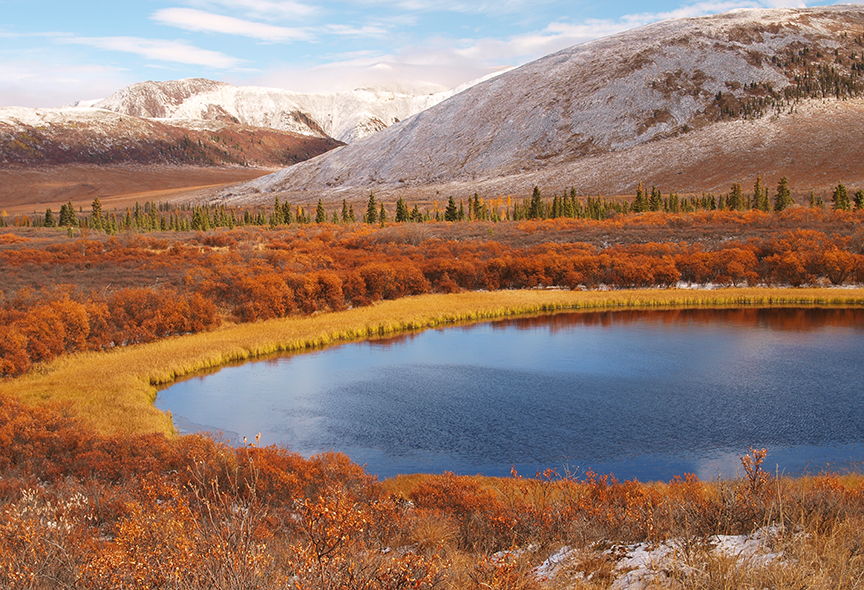
From the Dempster Highway, Yukon. Photo: Shutterstock
Dempster Highway
By the third week of August, a couple of hard frosts have killed the bugs, cranked up the vivid reds and yellows of the mosses, and transformed the Dempster Highway into one of the great scenic drives of the world. This 747km gravel highway begins just outside Dawson, in the Yukon, and finishes at Inuvik, on the Mackenzie River delta. You can drive the entire Dempster in a long day, but most people take two days, stopping at the lone station of Eagle Plains.
The Dempster crosses two mountain ranges, the Ogilvies in the south and the Richardson Mountains in the north. Day hiking into both ranges from the road is easy and requires little experience, except for knowing when to turn back. The road traverses the Ogilvies for some time, while it crosses the open Richardson Mountains at just one spectacular point.

Kayaking past the totems at SGang Gwaay, Gwaii Haanas National Park. Photo: Jerry Kobalenko
Gwaii Haanas National Park
Canada’s Galapagos is also an iconic sailing and sea kayaking destination. Highlights include Burnaby Narrows, the richest intertidal area in the world. The narrow channel all but dries out at low tide, exposing thousands of colorful bat stars, sea urchins, red rock crabs, and a cornucopia of shallow-water creatures. The famous 200-year-old red cedar totems at SGang Gwaay bear witness to a time, not too long ago, when the powerful and artistic Haida ruled this part of the B.C. coast.
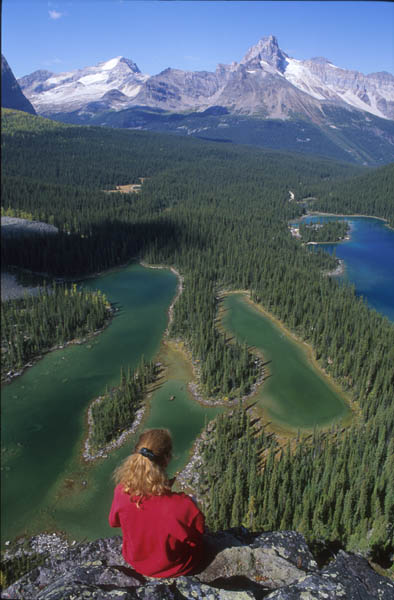
Day hiking near Lake O’Hara. Photo: Jerry Kobalenko
Lake O’Hara
Beloved by landscape photographers, the Lake O’Hara area in Yoho National Park had already captivated Group of Seven artists in the 1920s. The nearby Opabin Plateau remains a favorite with day hikers. To reach Lake O’Hara, take the morning shuttle (reserve your seat far in advance) from the parking lot near Field, B.C.
Although a campground and alpine hut cater to more hard-core outdoor people, many visitors either just stay the day or overnight at the swank Lake O’Hara Lodge. Prime season is the third week of September, when the larch have turned golden and the scenery with them.
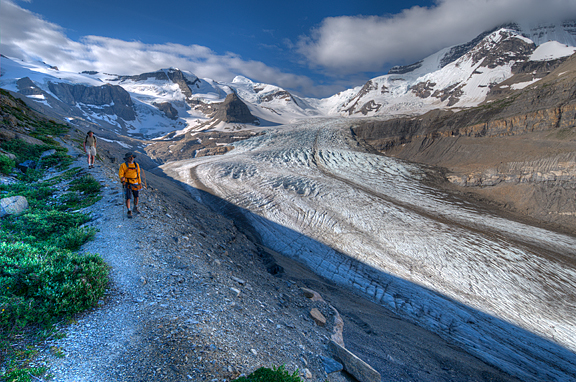
Robson Glacier. Photo: Jerry Kobalenko
Mount Robson
The highest mountain in the Canadian Rockies rises like a singleton volcano from the surrounding landscape rather than merely as the loftiest among many. Its massive, glaciated summit is best seen from Berg Lake. Small icebergs from a glacier drift in the lake’s turquoise waters. The three- to four-day B.C. backpacking adventure (20km one way) to Berg Lake puts you before one of the grandest scenes in Canada. More than a postcard, it could be the back of a hundred-dollar bill.
Those with the energy for a long day hike while camped at Berg Lake should tackle the nine kilometers to Snowbird Pass. The pass looks down onto the gigantic Reef Icefield. It’s like suddenly being transported to Antarctica. You have no idea that the icefield is there until the last moment, when you crest the final ridge and look down onto a white infinity.
Culture
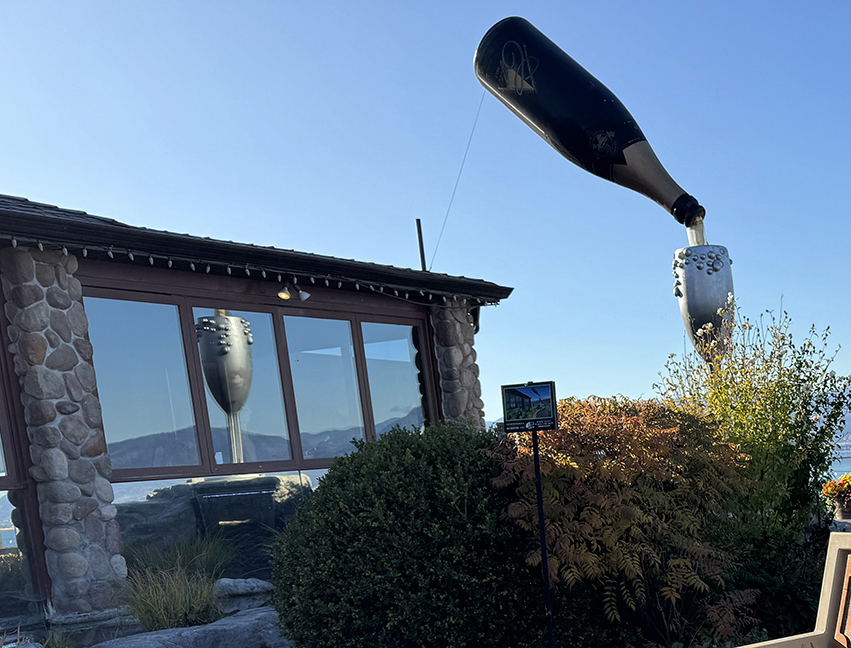
Summerhill, one of many wineries in British Columbia’s Okanagan. Photo: Jerry Kobalenko
Okanagan Wine Festival
Wine tourism is big business in B.C.’s Okanagan Valley, but nothing outdraws the wine festivals. Though the valley hums year-round with the appreciative ahhs of merlots and pinots being sampled, the pièce de résistance is the fall festival, which takes place in early October. You can take courses in wine appreciation, learn how to pair wine and food or simply show up at one of the region’s 60 wineries and cart away a case of your favorite vintage. www.thewinefestivals.com
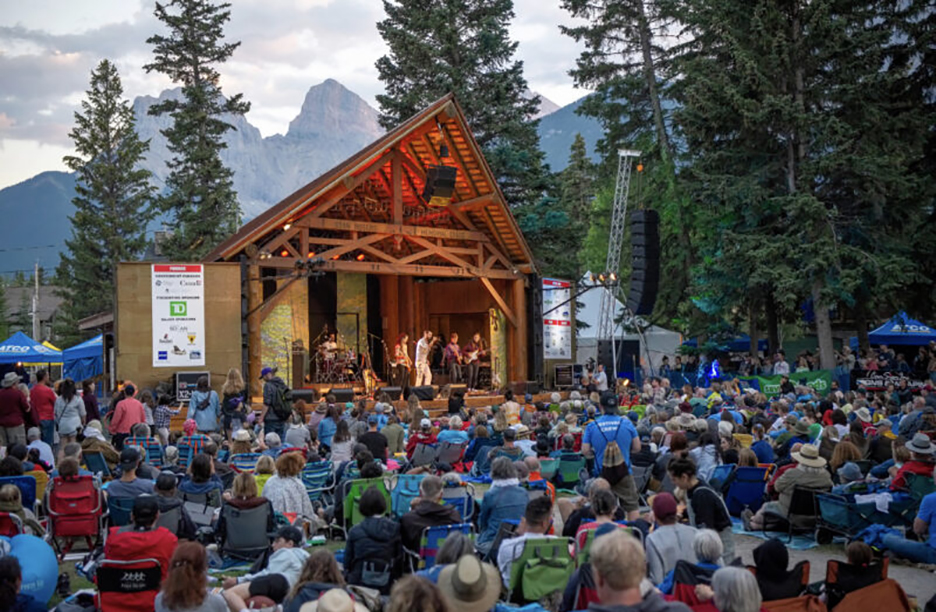
Photo: Canmore Folk Festival
Canmore Folk Festival
A folk festival with top talent, a community feel, in a gorgeous setting: It’s hard to imagine finding all three in the same place, but that’s what happens every summer in this Rockies town on the border of Banff National Park. Old folkies share the intimate stages with rising stars on the world music scene, while greying hippies sway to the beat and music lovers of all ages gorge on great local food. The non-alcoholic festival is especially family-friendly.
